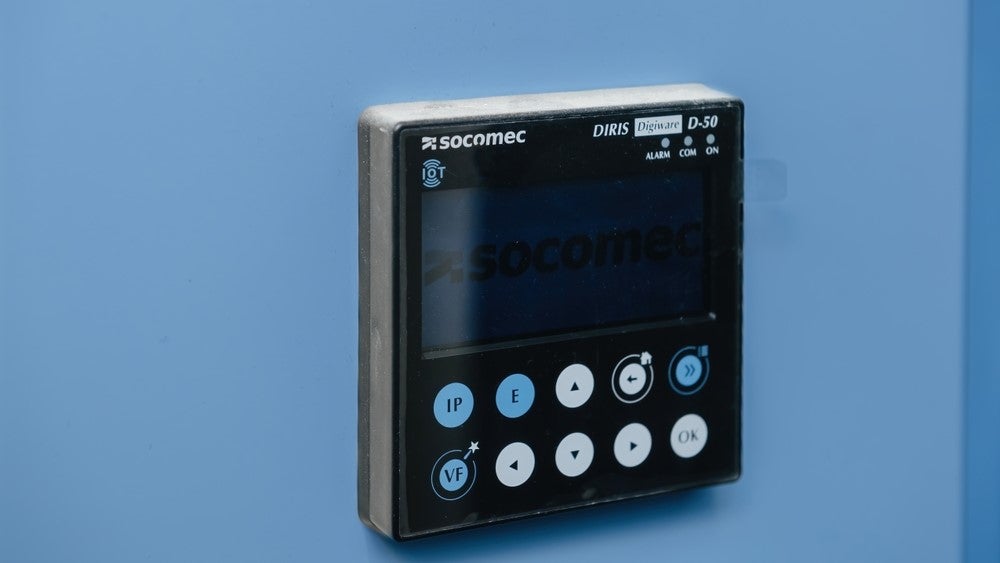
The Internet of Things (IoT) refers to the network of devices connected to the internet, responsible for sending and receiving data. The theme impacts all industries; however, it has unique potential in the energy sector as a means to manage and modernise outdated assets.
Power Technology spoke to Mauro Frizziero, IoT Program Marketing Manager at Socomec, and Patrick Fenner, co-founder and head of engineering at DefProc Engineering, to garner insights on the impact of IoT on the sector, and the possible trajectory for the future.
Socomec is a global manufacturer of electrical equipment for conversion, switching, monitoring and measurement; it also provides energy storage systems designed to reduce energy costs, improve the resilience of the electricity grid, and facilitate access to electricity.
Meanwhile, DefProc is a team of multi-disciplinary engineers working on bespoke projects, which include prototypes for IoT devices and network connectivity. It recently developed the domestic hydrogen sensor, H2Go for the EIC, Northern Gas Networks and Wales & West Utilities.
1. Where is IoT most commonly seen in the power sector?
Patrick Fenner, DefProc:
“Anything that is instrumented will be connected to the internet now because it allows for a greater view of what’s going on. For example, control panels in power stations are all computerized so you can see what’s happening now and what has happened in the past. This means that you can start comparing the two, establish trends and predict what you can expect to happen in the future. The National Grid is another example that has had centralized control for a while using IoT.
“It means that they can have people monitoring what’s happening 24/7, as well as what’s going on further afield. Previously, they would have only been able to see what was happening in that one building.
“Implementing IoT devices across their network means they can see what’s occurring in substations miles away and respond to incidents before people know there is one. The ability to map trends and expectations means that you can see growing problems and dispatch engineers before an incident even happens.”
2. How will the renewable sector be impacted by IoT technology?
Mauro Frizziero, Socomec:
“The landscape of renewable energy is poised for a remarkable transformation, thanks to the integration of IoT technology. We’re looking at a future where enhanced monitoring and predictive analytics play pivotal roles. This advancement isn’t just about data; it’s about how this data can revolutionize grid integration, energy storage, and operational efficiency across the board.
“What truly excites us is the potential for these developments to bolster the growth and sustainability of renewable energy. It’s becoming a vital player in our global energy mix. With IoT-driven insights, we anticipate significant strides in resource management, leading to lower operational costs and heightened efficiency.
“This is not just good news for the environment; it’s also a game changer in making renewable energy a more competitive alternative to traditional fossil fuels. We’re on the cusp of a new era in energy, where sustainability and efficiency go hand in hand, powered by technological innovation.”
3. What pain points can IoT technology solve in the power sector?
Patrick Fenner, DefProc:
Fenner considered the problem-solving potential of IoT: “One of the biggest solutions that IoT technology offers is that you can increase the amount of data you receive and process without employing more people to do that work.
“All of your data can be processed in one place, giving you greater insight and overview of your operations. One of the major things that companies are working on at the moment is accurately predicting what’s going to happen in five minutes, five hours or the next day and implementing processes to react to expected problems.”
4. How do you expect that IoT technology will evolve, and how will this shape the energy sector?
Mauro Frizziero, Socomec:
Frizziero considered the future of IoT in the sector: “As we look to the future, it’s clear that IoT technology is set to play a pivotal role in reshaping the energy sector. We’re not just talking about incremental changes; we’re anticipating a wave of innovation that will redefine how we approach energy services and business models.
“One exciting development we foresee is the evolution of IoT devices themselves. Imagine devices that aren’t just connected but are also incredibly smart, capable of processing and analysing data right where it’s collected. This move towards edge computing means faster decision-making and enhanced responsiveness in the energy sector, fundamentally changing how we respond to energy needs and challenges.
“But the real game changer? The fusion of IoT and artificial intelligence. We’re going to see AI algorithms sift through the massive amounts of data generated by IoT devices, extracting insights that were previously inaccessible. This isn’t just data crunching; it’s about making smarter, more optimized decisions in energy management.
“As IoT becomes more ingrained in the energy sector, cybersecurity emerges as a top priority. We’re committed to implementing evolving technologies and standards to secure these devices and communication channels. Protecting our critical infrastructure from cyber threats is not just a technical challenge; it’s essential for maintaining the integrity and resilience of our energy systems.
“In summary, the future of IoT in the energy sector is not just about technology; it’s about smarter, more secure, and more efficient energy management that benefits us all.”
Patrick Fenner, DefProc:
Fenner also considered the question: “Developments in battery life, energy harvesting and low energy consumption mean that IoT devices that currently have a one or two-year lifespan can become “fit and forget” devices. This means they will be better placed in those hard-to-reach environments where they can monitor things that are currently unknown.
“For example, in 2022, Severn Trent Water rolled out an IoT water network across Coventry and the data collected led to the detection of around 3000 leaks. Previously, they would receive updates every six months. Their sophisticated IoT network provides hourly data on water consumption, such as when and where water is running.”



